
Hey Mike,
I recently posted at American that cold has killed many more than heat based on what I learned here from you. I posted these two links:
However, the replies I got disagreed. One reply from a pro met was this:
“Heat kills more directly. Respiratory deaths attributed to cold seems not particularly honest when comparing the two.”
and from a non-met:
“Typical anthro related global warming nonsense. Probably written by JB.”
I’m more interested in what you think about the reply from the pro-met about heat killing more directly. Does he have a legit point?
Also, would you please post any other sources you have on the cold vs heat fatalities debate? TIA
I don’t know that I’m going to spend any more of my valuable time debating this as it likely wouldn’t change minds, regardless. At least the replies weren’t nasty. Besides, perhaps the pro met has a point. So I might leave well enough alone.
Thanks a ton, Larry!
Great topic and it's one of those that SOME people will just go with the data source that tells them what they think already.......and justify it.
https://journals.ametsoc.org/view/journals/bams/86/7/bams-86-7-937.xml
++++++++++
I've always noted that NOAA is extremely bullish on heat deaths, while the CDC and other global sources that seem authentic to me, have many more cold deaths, usually by a factor of ~10 or more.
Your first link sited this study below as a reference, which is considered by many to be the most comprehensive, gold standard global study ever done in 2015.
We should note that its pretty lopsided and consistent for every country.
https://www.thelancet.com/journals/lancet/article/PIIS0140-6736(14)62114-0/fulltext

Here's another one for just Europe that was just done.
https://www.thelancet.com/journals/lanplh/article/PIIS2542-5196(23)00023-2/fulltext
+++++++++++++++
I love graphs! This one below from that study looks balanced between heat and cold just looking at the colors but LOOK AT THE SCALE at the bottom!
For heat deaths, 25/100,000 on the right ~ 150/100,000 on the left for cold deaths.
So the bars for cold represent 6 times the same size bars for heat! I don't think that this was intentionally deceptive but instead, was done to make the heat data easier to see.
The total for all of Europe is:
Around 9 excess heat deaths/100,000
Around 80 excess cold deaths/100,000
So 9 times more excess deaths from cold compared to heat. Seems pretty significant to me.

A large number of the heat related deaths occur in big cities which suffer from the Urban Heat Island Effect as noted below in a recent post.
You already knew this but it's just a good point for others to remember when attributing the actual sources of deadly heat.
Re: Re: Re: Re: Re: Vegas hit 120 beating all-time record high by 3!
By metmike - July 11, 2024, 9:53 p.m.
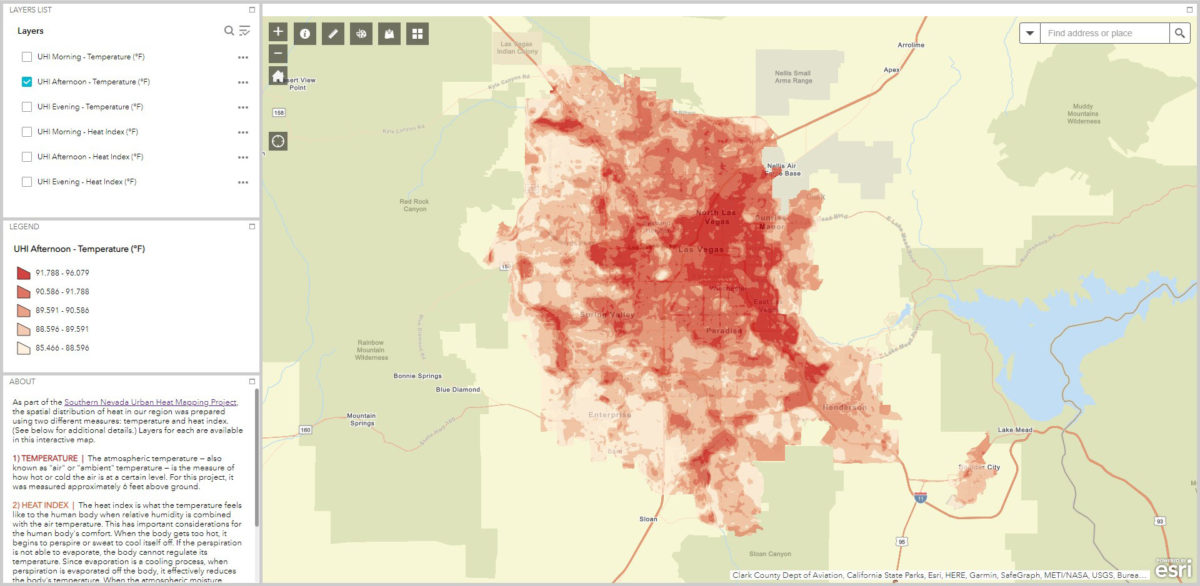
++++++++++++
https://www.sciencedirect.com/science/article/abs/pii/S0195925515001043
Humans, of course can adapt to weather, especially cold and warm extremes.
We wear heavier clothing in Winter and live in buildings that are heated and cooled using energy sources.
This saves the majority of lives that would perish in the same conditions if we took that away. However, there are those with pre existing conditions, that don't have access to an optimal climate indoors or that over expose from bad judgment.
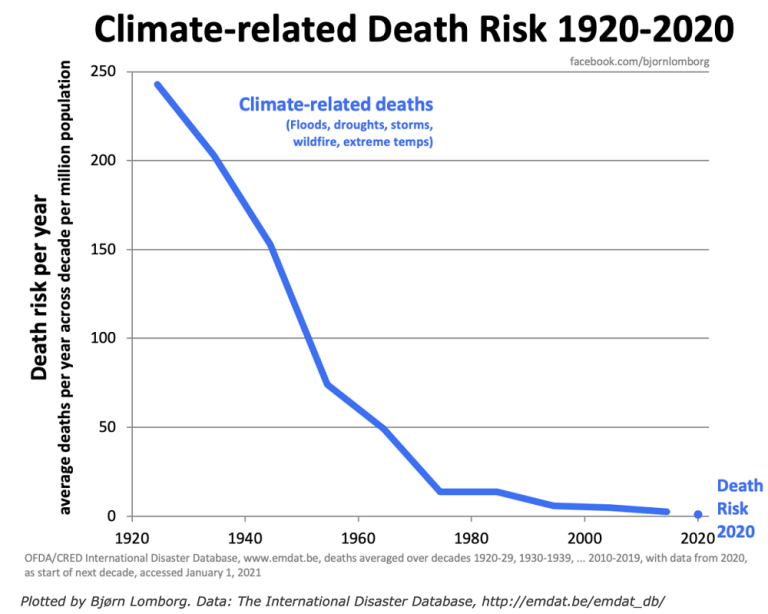
What about animals and other life that is without the same technology that we use to save the vast majority of HUMAN lives that were taken 100 years ago from similar conditions?
Animals and plants are being directly exposed to all the raw elements of weather/climate, 24 hours a day, 365 days a year.
What kills the most creatures on this planet? Heat or cold?
What kills the most plants? Heat or cold?
How are THEY doing from the increase in global temperatures (which is greatest in the coldest places, during the coldest times of year) and increase in CO2 from ~`290 ppm to ~425 ppm(well mixed in the global atmosphere)?
This is the TRUE measure of the impact of climate change that takes out the life saving technology we humans benefit from
Let's spend some time discussing that.
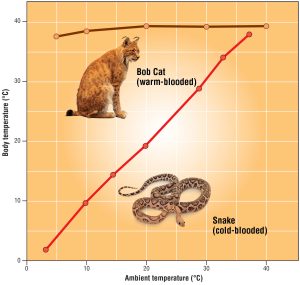
Figure 1. Body temperature vs. ambient temperature for warm-blooded animals (endotherms) and cold-blooded animals (ectotherms).
http://www.nature.com/scitable/knowledge/library/homeostatic-processes-for-thermoregulation-23592046
++++++++++++++++++++++++++++++

Figure 2. Some cold-blooded animals have found ways to counteract the formation of ice, which can damage their tissues and potentially kill them. For example, antifreeze proteins (1) bind to the surface of ice crystals outside the cells to prevent these ice crystals from growing (2). As these ice crystals form, water flows out of the cells to compensate for the increasing concentration of solute in liquid water outside the cells (3). Inside the cells, compounds called cryoprotectants (4) increase the concentration of solutes, preventing further water loss and cell damage. Proteins on the cell membranes, called aquaporins (5), allow water and some cryoprotectants to flow inside the cells.
Joelle Bolt; Reprinted with permission from The Scientist; www.the-scientist.com/?articles.view/article No/34223/title/Freezing-Cells/
https://napervilleparks.org/how-do-plants-survive-in-winter
https://www.gbbg.org/how-plants-survive-winter/
https://www.ncbi.nlm.nih.gov/pmc/articles/PMC7795586/

Temperature is a key factor in plant growth and development. Along with the levels of light, carbon dioxide, air humidity, water and nutrients, temperature influences plant growth and ultimately crop yields. All these factors should be in balance. Temperature influences the plant in the short term as well as the long term.
https://www.cannagardening.com/how_air_temperature_affects_plants

+++++++++
https://extension.okstate.edu/fact-sheets/greenhouse-carbon-dioxide-supplementation.html
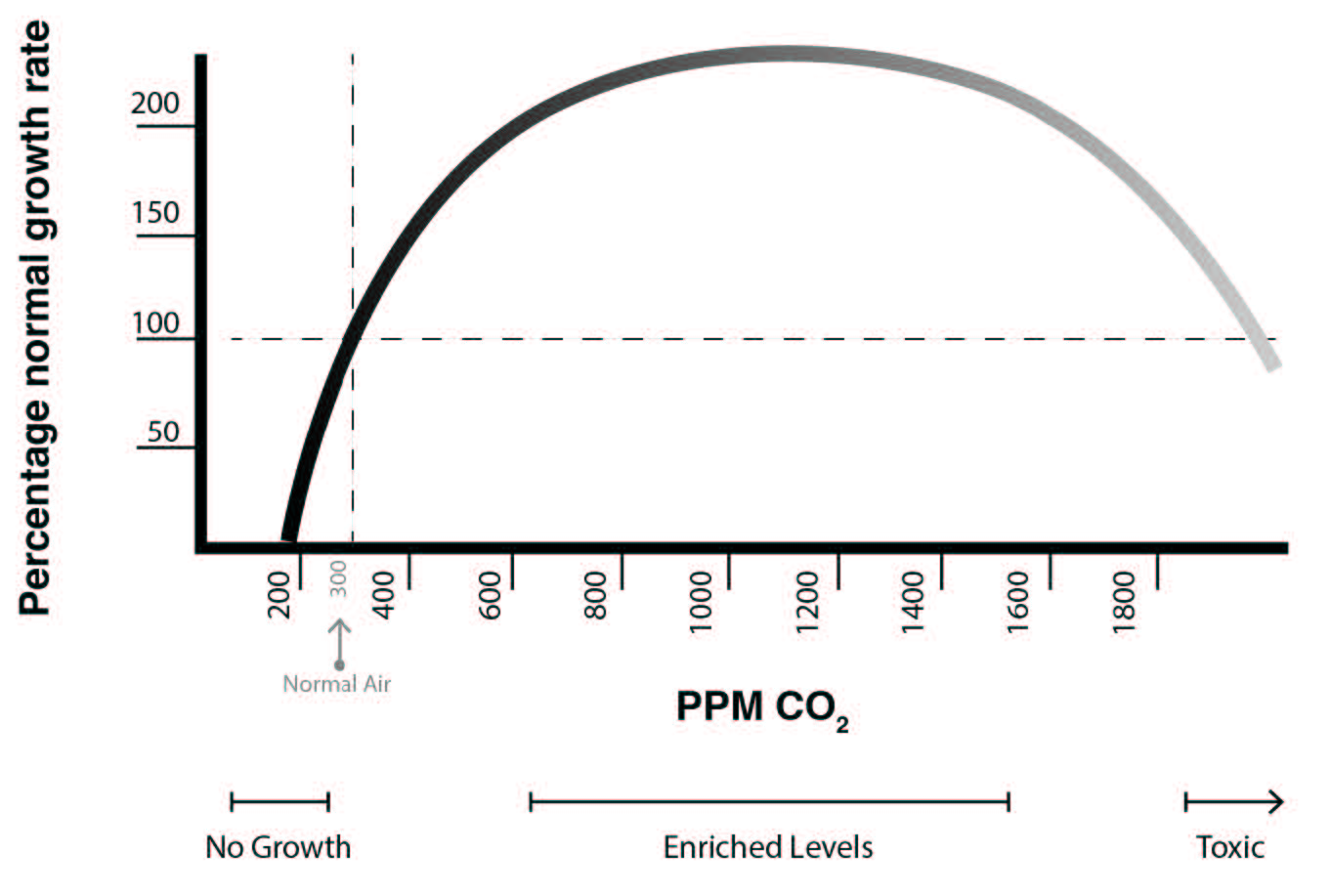
Several important things to note from this graph.
1. When CO2 gets just below 200 ppm, photosynthesis SHUTS DOWN. Look at the range above and think about where atmospheric CO2 was on this graph in the 1870's at just 290 ppm.on the far left!! If we had dropped just 100 ppm, (instead of increasing 135 ppm) none of us would be here. Our planet was in extreme CO2 starvation mode and at the steepest part of the curve where small changes have the biggest impact.
2. It's tough to line things up perfectly but let’s track along the path of the line from 290 ppm to 425 ppm. I get closer to a 70% change (80% to 150%) from 1870's to 2024. . Since this coincides to one of the steepest parts of the curve(low CO2) its actually a very reasonable value but lets just call it 60% to be safely conservative.
3. So the rate of increase in photosynthesis was probably more like +1% for every +3 ppm increase before the year 1900 and has slowed a bit in recent years to around +1% every +5 ppm and later this century will be more like +1% for every +7 ppm.
4. The rate of increase in growth starts flattening out with increasing CO2 and tops out at just over 1,000 ppm. I've been stating that 900 ppm is the optimal level to be conservative and it varies by plant. For wheat, numerous studies show it as just over 900 ppm.
+++++++++++++++++
This next graph is where we really learn something new that NEVER gets discussed but is extremely profound.
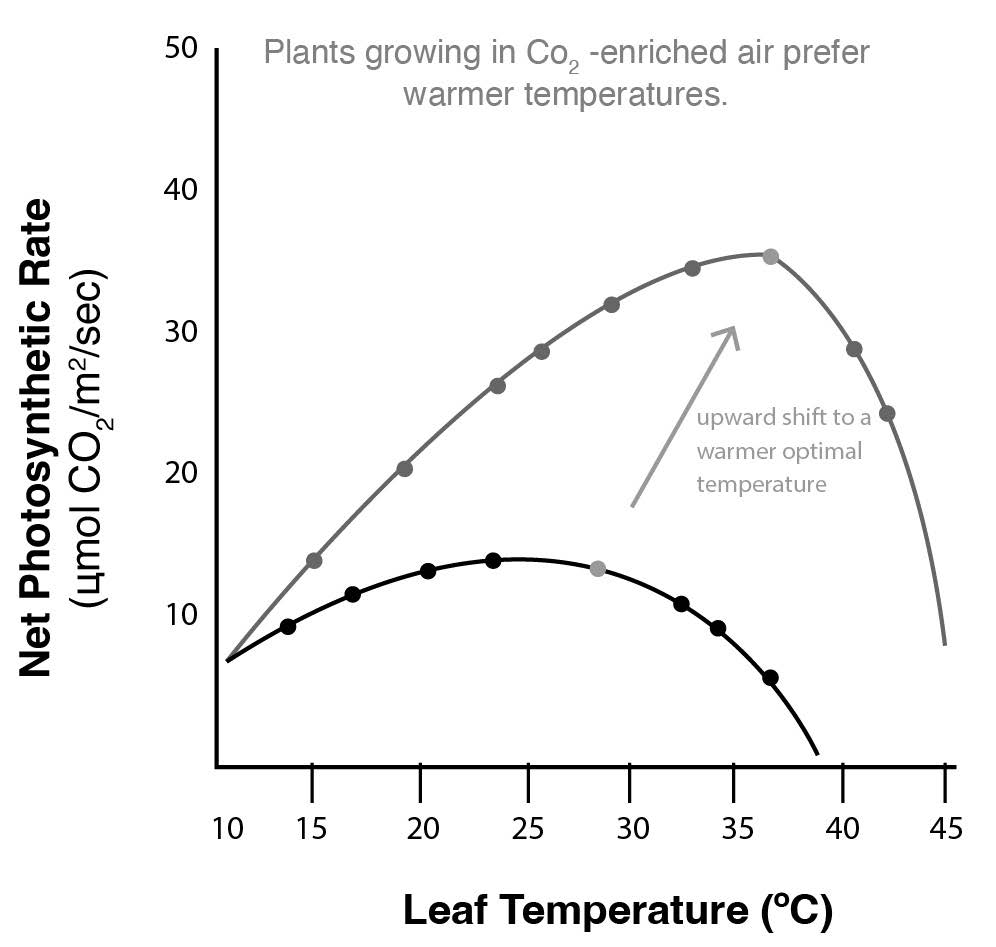
Temperature plays a big role in the rate of plant growth. Most biological processes increase with increasing temperature and this includes the rate of photosynthesis.
But the optimum temperature for maximum photosynthesis depends on the availability of CO2. The higher the amount of available CO2, the higher the optimum temperature requirement of crops (Figure 2). In a greenhouse supplemented with CO2, a dramatic increase in the growth of plants can be observed with increasing temperature. Supplemental CO2 increases the optimum temperature requirement of a crop. This increases production even at higher temperature, which is not possible at the ambient CO2 level.
Supplemental CO2 affects the physiology of plants through stomatal regulation. Elevated CO2 promotes the partial closure of stomatal cells and reduces stomatal conductance. Stomatal conductance refers to the rate of CO2 entering and exiting with water vapor from the stomatal cell of a leaf. Because of reduced stomatal conductance, transpiration (loss of water from leaf stomata in the form of water vapor) is minimized and results in an increased water use efficiency (WUE) (ratio of water used in plant metabolism to water lost through transpiration). Lower stomatal conductance, reduced transpiration, increased photosynthesis and an increase in WUE helps plants to perform more efficiently in water-stressed conditions. Supplemental CO2 reduces water demand and conserves water in water-scarce conditions.
++++++++++++++++++++++
1. The higher the CO2 level is in the atmosphere, the better that plants do with increasing temperatures compared to plants with lower CO2.
2. The higher the CO2 level is in the air, the better that plants do in drought Compared to a lower CO2.
OK, that was just background information for us to think about.
Now let's discuss if the earths creatures (outside of humans) and biosphere are doing better or worse from the slight warming and big increase in CO2.
Thanks, Mike!
YW, Larry!
more to come later!